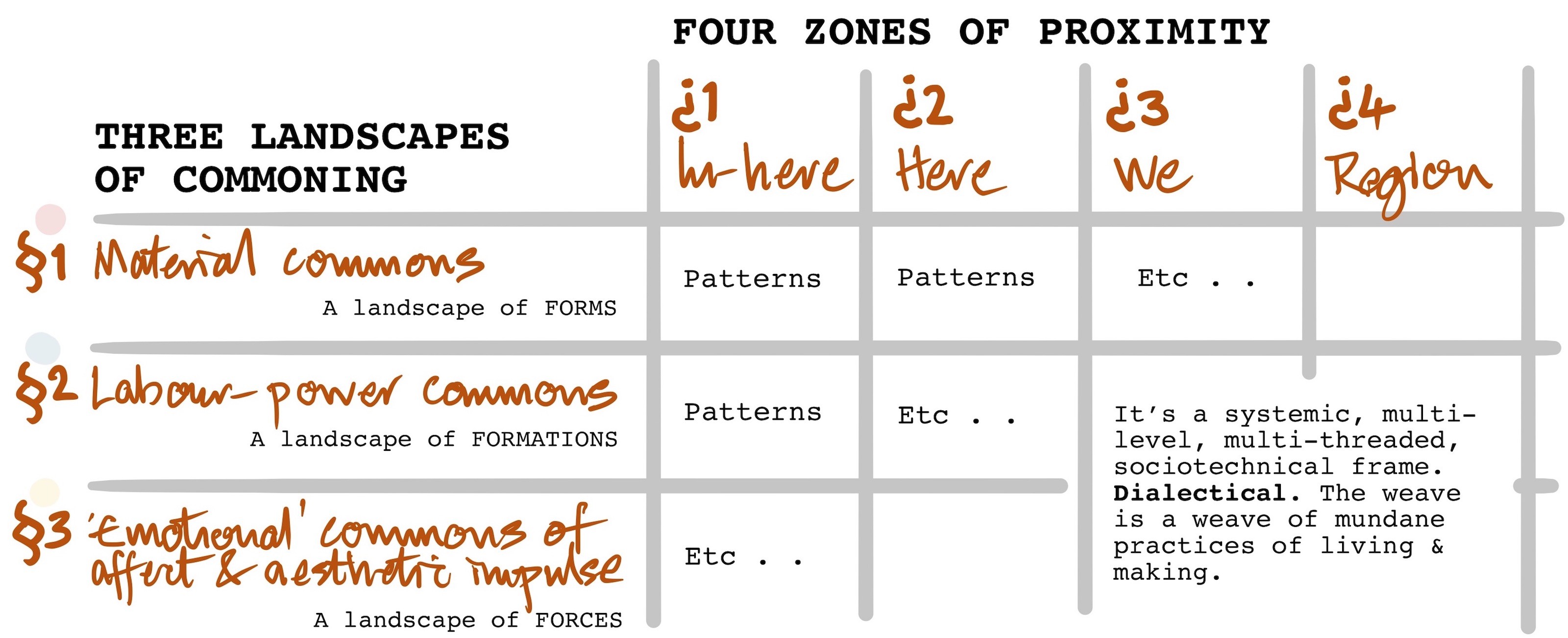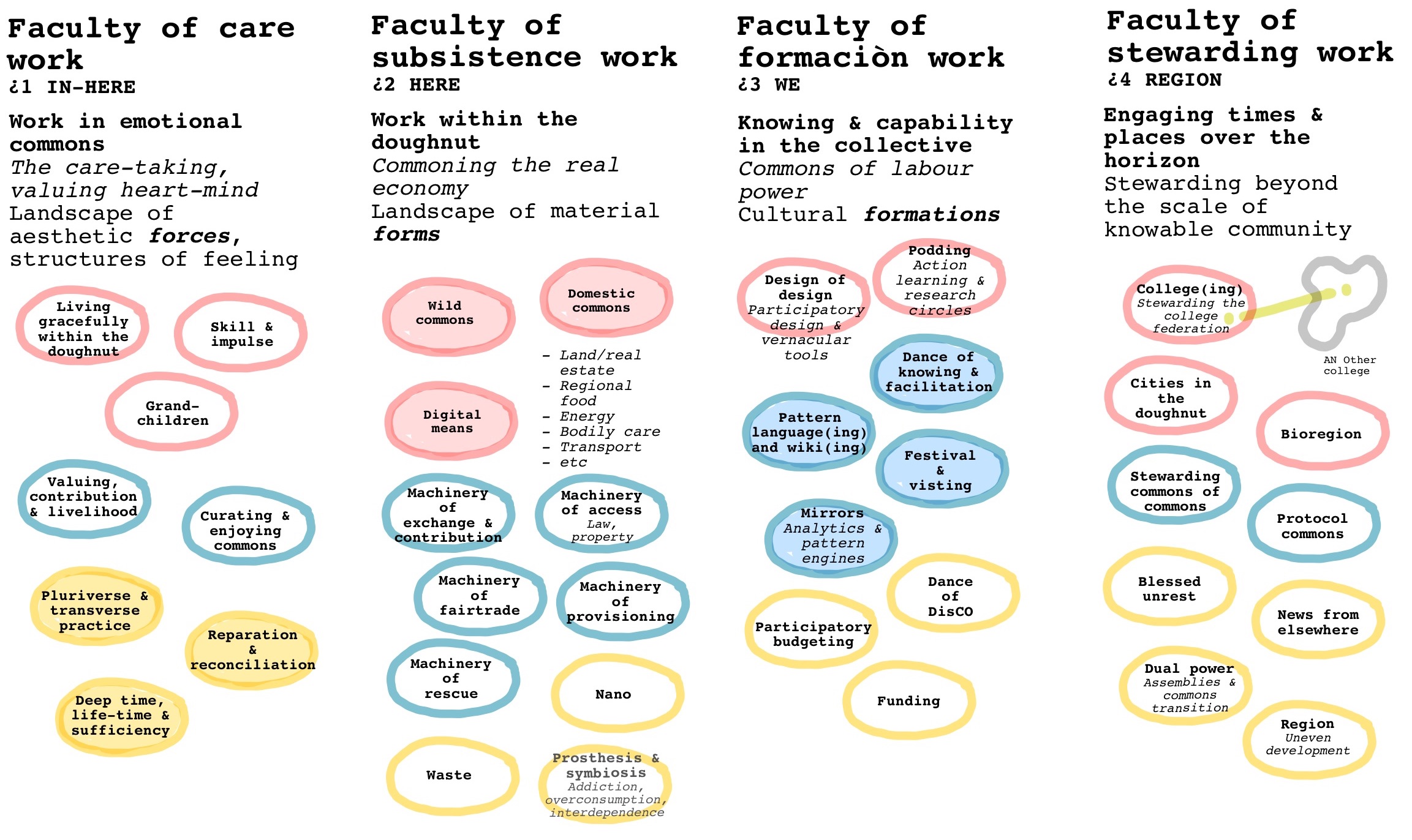Here we describe how the landscapes of practice and the zones of reach can generate a 'weave' of imaginative spaces that is rich enough to be a container for a pattern language of activist practice in making a living economy.
# The foprop weave
This 'weave' is constructed as a conceptual, imaginative and practical space - a mapping space, a weaving or dancing space, a map of a weaving or dancing space - from two dimensions, each of which is intrinsically rich: - Landscapes of practice - Zones of reach in activist practice
With landscapes running across (the weft) and zones running down (the warp), this generates a living, animated 'fabric' of twelve regions within which families of patterns - collections of living documents - can be placed for safe keeping and sharing.

§landscape (weft) and ¿zones (warp) The foprop weave
Each region can hold any number of patterns. We organise the patterns in families; hopefully a small enough number of families for them to be held in imagination, without seriously limiting the scope of the patterns that exist in the weave. Families of patterns
In the same way that warp is put on the loom first, with weft threads woven across to create a substantial coherent fabric, so in the foprop weave we adopt the warp - ¿zones - as the primary focus. Families are organised within one or another ¿zone. However, within the zone, a family will have a predominant orientation to one or another landscape.
Thus patterns can 'affiliate' with others in the same zone, and 'resonate' with patterns in other zones. This is not a simple fabric composed of adjacent units; it's hyper-dimensional. More, in fact, like a mycelium than a grid or matrix. Or maybe, more like a field, with regions of different frequencies or resonances within it.
# A 'container' - for what? What can a collection of patterns contain?
This is a deep question about practices of knowing. We'll say more in a separate wiki on pattern language(ing) and a wiki on 'the dance of knowing'. Pattern language and the foprop weave Tools for conviviality For a comparison with other approaches see Containers for knowledges?
Basically we view pattern descriptions, 'containerwise', as - generative, inspirational and descriptive means (structured and rich text-based media) that may - facilitate and enable the performing of particular qualities of action - with particular tendencies in outcome - by 'singing' or 'dancing' them into practice, in situ, in real time, in the real economy - in conjunction with other patterns within a pattern language collection: - in something like a chorus or a dance. Dance of knowing
Thus, mobilising a collection of patterns is something like a practice of choreography or musical improvisation. Which means that 'the container' must be understood to be a practical (enacted, working) combination of - skilfully composed **media** (pattern descriptions) - **skill** in reading and writing patterns (pattern language(ing)) in some participiants, and - **genre capability** (pattern dancing?) in a community of practice - in the real economy.
These skills, genres and media forms are concerns within the pattern language itself. Zone ¿3 - We (formación work)
Here we outline the practice of pattern language(ing) that generates and sustains the foprop weave.
This is a repository of prototype versions of patterns (or often, placeholders). At this stage we work only at the level of pattern families. Evolving the language calls for time and diverse community. This is a separate wiki.
Initially, we imagine the foprop weave to be populated in the way sketched below, by roughly 40 families of patterns distributed across the four zones of reach and the three landscapes.

Pattern families across four zones of reach and three landscapes (red, blue, yellow)
---